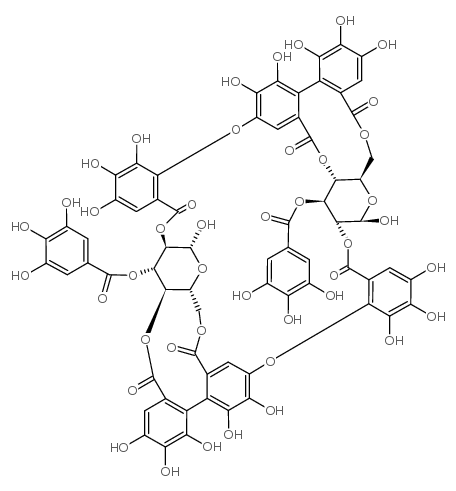| In Vitro |
Oenothein B (15-45 µM; 12-72 hours) has a dose- and time-dependent inhibition rate effect on A549 cells in the range of 12 hours, 24 hours, 36 hours, 48 hours, 60 hours and 72 hours of exposure[1]. Oenothein B (15-45 µM; 24 hours) effectively inhibits the proliferation of A549 cells by inducing apoptosis and arresting cells at G1 stage[1]. Oenothein B (15-45 µM; 24 hours) not only increases the level of intracellular reactive oxygen species (ROS), but also induces the upregulation of intracellular apoptotic triggers (cleavage caspase-3, PARP, cytochrome c level in the cytosol, Bax)[1]. A549 cells[1]15 µM, 30 µM and 45 µM24 hoursArrested cells in the G1 phase.A549 cells[1]15 µM, 30 µM and 45 µM24 hoursBAX, p53, cytochrome c (cytoplasm) and PARP were unregulated significantly; Anti-apoptotic Bcl-2 was decreased significantly in a concentration-dependent manner. Cell Viability Assay[1] Cell Line: A549 cells Concentration: 15 µM, 30 µM and 45 µM Incubation Time: 12 hours, 24 hours, 36 hours, 48 hours, 60 hours and 72 hours Result: Effectively inhibited the proliferation of A549 cells. Apoptosis Analysis[1] Cell Line: A549 cells Concentration: 15 µM, 30 µM and 45 µM Incubation Time: 24 hours Result: Induced apoptosis in A549 cells. Cell Cycle Analysis[1] Cell Line: A549 cells Concentration: 15 µM, 30 µM and 45 µM Incubation Time: 24 hours Result: Arrested cells in the G1 phase. Western Blot Analysis[1] Cell Line: A549 cells Concentration: 15 µM, 30 µM and 45 µM Incubation Time: 24 hours Result: BAX, p53, cytochrome c (cytoplasm) and PARP were unregulated significantly; Anti-apoptotic Bcl-2 was decreased significantly in a concentration-dependent manner.
|
